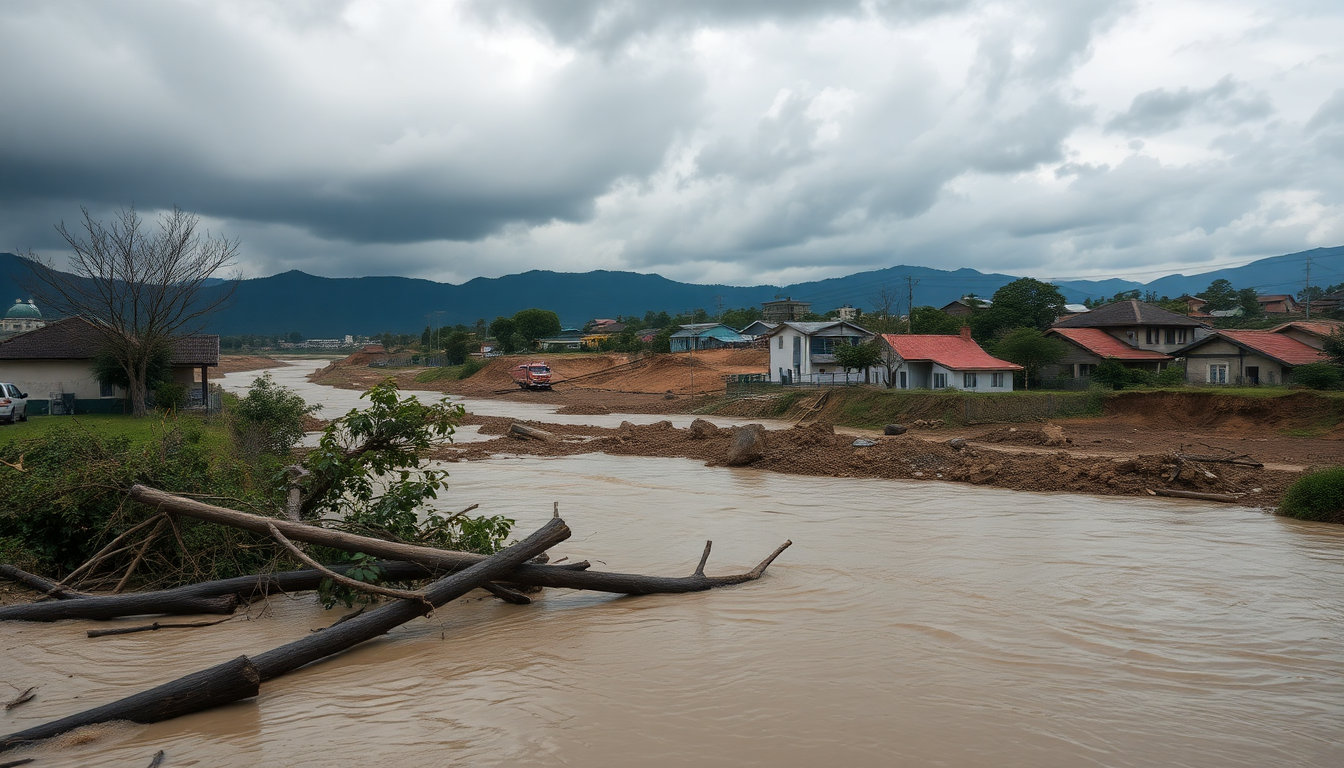Table of Contents
Recently, northern China has been facing some serious weather challenges, with unprecedented conditions leading to severe landslides and flooding. This alarming situation has prompted local authorities to issue urgent flood warnings across several provinces, including Beijing. It serves as a stark reminder of how increasingly vulnerable densely populated areas are becoming to extreme weather events, often linked to the looming threat of climate change.
Recent Incidents and Immediate Responses
The most shocking incident took place in Hebei province, where a landslide caused by exceptionally heavy rainfall tragically claimed four lives, with eight others reported missing. State broadcaster CCTV confirmed that the landslide hit a village near Chengde city, highlighting the immediate dangers posed by such extreme weather patterns. In a proactive move, authorities have evacuated over 4,400 residents from affected areas, particularly in the suburban region of Miyun in Beijing.
In Miyun, relentless rains triggered flash floods that severely damaged local infrastructure and displaced countless families. Disturbing images shared on social media platforms like WeChat show vehicles floating on submerged roads and residential buildings almost entirely underwater. To make matters worse, power outages have left over 10,000 residents in the dark, as reported by CCTV. This ongoing rainfall is part of a worrying trend; northern China has been experiencing record precipitation levels in recent years.
Broader Impacts and Government Interventions
The Central Meteorological Observatory has predicted that heavy rainfall will continue for the next three days, leading the Water Resources Ministry to issue targeted flood warnings across 11 provinces and regions. In response to the severity of the situation, Beijing has raised its flood alert to the highest level. The national emergency management department is actively assessing the flooding in Hebei province, which surrounds the capital.
Videos emerging from Shanxi province show the widespread devastation, with roads completely inundated and agricultural fields submerged. This province, which is home to the historic city of Xian, has also issued flash flood disaster risk warnings, illustrating the widespread nature of the crisis. These recent storms are part of a larger pattern of extreme weather events that have not only disrupted daily life but also significantly impacted economic activities across the region.
In a rapid response to the disasters, China’s National Development and Reform Commission has allocated 50 million yuan (around $7 million) to aid Hebei. These funds are specifically designated for repairing crucial infrastructure, including roads, bridges, and public facilities affected by the floods. Such interventions are essential for the swift recovery of the impacted areas.
Climate Change and Future Outlook
Natural disasters are not exactly rare in China, especially during the summer months when some regions are hit with heavy rainfall while others suffer from intense heatwaves. The recent flash floods in Shandong province, which claimed two lives and left ten missing, along with a landslide in Sichuan that resulted in five fatalities, further underline the urgency of tackling these environmental challenges. Scientists are increasingly connecting the heightened rainfall in northern China to the broader effects of global warming, raising questions about how prepared we are for the future.
As authorities keep a close eye on the situation, it’s crucial for communities and local governments to ramp up their disaster preparedness strategies. These strategies should focus on effective response mechanisms, infrastructure improvements, and public awareness campaigns aimed at mitigating the impacts of future extreme weather events. How ready are we to face the next challenge?


